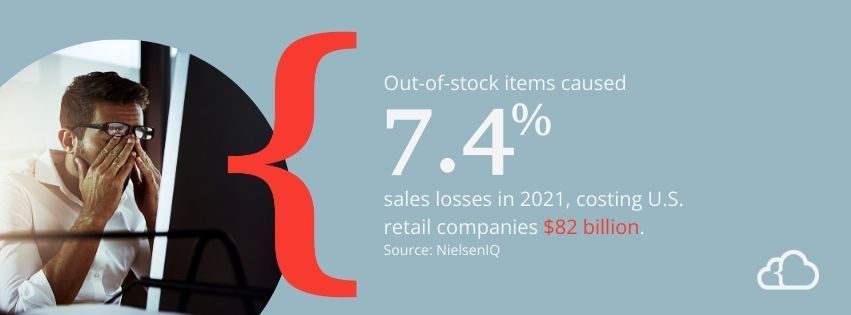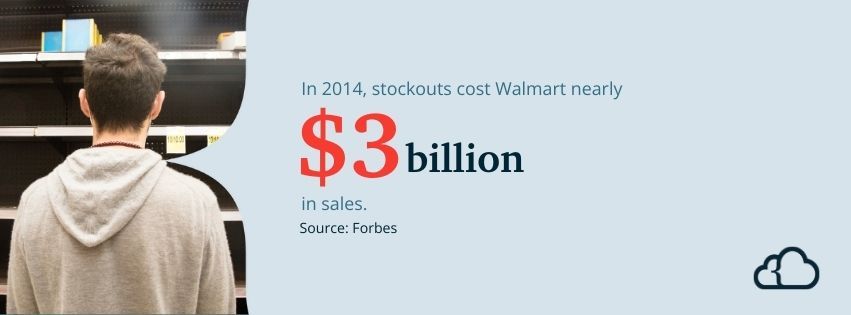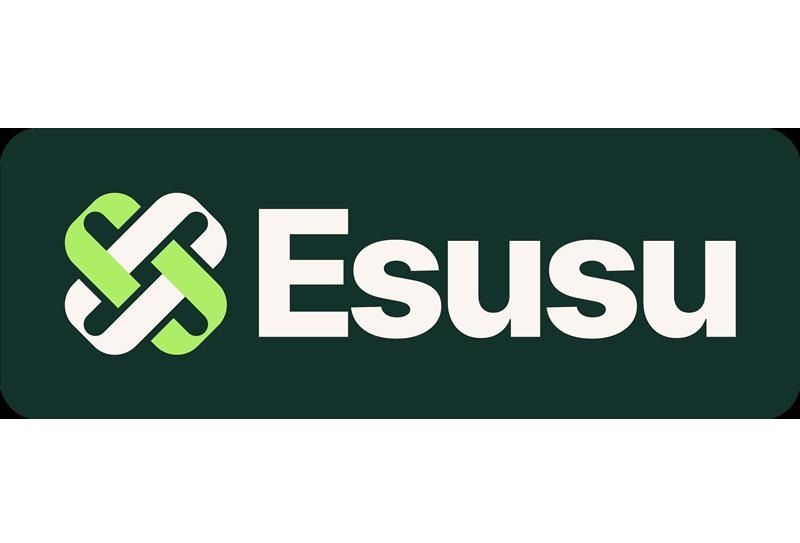NetSuite Demand Planning: Forecasting to Prevent Out-of-Stock Scenarios
Inventory management is a delicate dance. To turn a profit, you have to find the balance between too much stock and not enough. The right software can make it happen.
Imagine you’ve got a great product, sales are booming, and the stakeholders are happy until—bam—you run out of stock. Customers get frustrated, sales are lost, and you’re left wondering what happened.
Does this story sound familiar? It should if you work in retail. Statista reports that more than half of online shoppers worldwide couldn’t purchase items at some point in 2022 due to stockouts. Nearly 60% of U.S. customers also said product unavailability influenced their shopping.
In fact, Oracle NetSuite says the global average stockout rate hovers around 8%, and it rises for individual companies during sales.
Balancing inventory with demand is an overwhelming job—we know. Yet, there is hope. The right tools can reduce stockouts to a minimum and keep cash flowing. The Demand Planning Module in NetSuite’s enterprise resource planning (ERP) system helps prepare for high-demand periods so shelves remain stocked and customers stay happy.
SuiteDynamics works with NetSuite to customize and implement NetSuite software. Our experts can examine your company operations and develop digital solutions that predict demand and manage inventory accordingly.
Schedule a consultation with our team to further discuss the demand planning module so your staff can kiss empty shelves goodbye.
Key Takeaways
- Predict Demand to Balance Inventory: Demand planning is all about forecasting future sales to keep enough stock on hand without overloading on inventory costs or risking stockouts.
- Rely on Historical Data and Forecasting: NetSuite’s Demand Planning module analyzes past sales trends and seasonal peaks, using different forecasting methods to predict future needs accurately.
- Optimize Supply Chains and Set Reorder Points: It’s not just about stock levels—NetSuite also tracks supplier schedules and lead times and helps set reorder points and safety stock to avoid running out.
- Stay Adaptive with Market Changes: NetSuite monitors real-time market trends, helping to prevent stockouts and respond to shifting demand. It ensures the right products are always available.

What Is Demand Planning?
At its core, demand planning is a strategy for anticipating future sales and ensuring your company has the right amount of stock available to meet that demand.
It’s a high-stakes gamble. If you predict correctly, you’ll have enough products to keep customers happy but not so much that you’ll get overwhelmed by inventory costs. Predict wrong, and you’ll drown in excess stock or worse—be forced to post “out-of-stock” signs on customers’ favorite products.
NetSuite Product Marketing Manager Abby Jenkins explains that the consequences of poor demand planning can be dire.
“Excess inventory locks up working capital, adds inventory carrying costs, and increases the potential that you’ll be stuck with low value or obsolete inventory,” she writes. “Alternatively, poor planning can result in avoidable supply chain disruptions and leave a company short on products, which can result in backorders, stockouts, or costly scrambles for raw materials. All of these issues can result in delays, which leads to dissatisfied customers.”
In fact, Nike discovered this truth in 2000, when a software glitch caused the company to manufacture too many shoes that no one wanted and too few of the ones that people did. As a result, Nike lost more than $100 million.
SuiteDynamics experts can help your company avoid that tragic fate. We’ll implement NetSuite’s Demand Planning module to help you strike the right stock/demand balance using historical data, trends, and forecasting magic that give insight into the stock levels you’ll most likely need.
Schedule a consultation today to learn more about the module and how it can solve your most concerning inventory problems.

How Does NetSuite Demand Planning Work?
Even a small percentage of sales loss adds up. NielsenIQ reports that out-of-stock items caused 7.4% sales losses in 2021, costing U.S. retail companies $82 billion.
NetSuite’s Demand Planning module helps mitigate those losses by performing the heavy lifting when it comes to predicting how much stock you’ll need in the future. Here’s a breakdown of how it works:
1. Historical Data Analysis
NetSuite examines past sales data to understand trends. It analyzes things like how much of a certain product you’ve sold over time, which seasons or months tend to have higher demand, and even how external factors (like a sale or a new product launch) affect your sales numbers.
2. Sales Forecasting
Once NetSuite has a handle on your historical data, it uses that information to forecast your future sales. Depending on your business, you can choose from different forecasting methods, such as moving averages or linear regression.
3. Supply Chain Optimization
NetSuite’s Demand Planning isn’t just about keeping an eye on what’s in your warehouse. It also looks at your suppliers, lead times, and shipping schedules to optimize your supply chain. This way, you can place orders well before running out without carrying too much stock.
4. Reorder Points and Safety Stock
Retailers can replace most out-of-stock items in less than three days, but not all—and that’s another problem. Retail Solutions reports that 2% of out-of-stock items remain off the shelves for more than 10 days and comprise more than half of sales losses.
That’s why reorder points (the inventory level at which you should reorder) and safety stock (the extra buffer of stock to account for unpredictable demand) are crucial.
NetSuite helps determine when to reorder and how much safety stock to keep based on factors like lead times and demand variability, so you can rest easy knowing you’ve got a safety net.

No company can take out-of-stock items lightly—not even the retail giants. According to Forbes, stockouts cost Walmart nearly $3 billion in sales in 2014 due to inventory that outgrew sales, an inefficient restocking strategy, and other issues. This truth is why you need well-developed demand planning technology and strategies that keep your inventory levels balanced and your supply chain optimized.
Schedule a consultation with SuiteDynamics experts to discover more about NetSuite’s Demand Planning software. We’ll discuss your company’s needs and any customizations you might need to meet them. Our team will ensure you’re equipped to keep customers—and your bottom line—satisfied.
How Forecasting Prevents Out-of-Stock Scenarios
You can’t plan for demand without a solid forecast based on historical data. It’s a significant part of the planning process and involves more than analyzing past sales. You’ve got to be proactive and stay ahead of the game, stocking your shelves with just enough products to keep customers happy.
Fortunately, NetSuite also offers plenty of ways to avoid out-of-stock headaches:
1. Identifying High-Demand Periods
NetSuite highlights peak demand periods, both the obvious (like holiday rushes or back-to-school season) and the seemingly random upticks in sales. Knowing when customers want your products allows you to plan, stock up, and avoid going out of stock on favorite items.
2. Handling Promotions and Sales Events
If everything goes according to plan, your big promotions and marketing campaigns will always boost sales, creating out-of-stock risks. You can manually adjust your forecasts in NetSuite to reflect expected increases in demand during those periods. This adjustment ensures stock levels match your marketing efforts, and you don’t have to scramble to fill orders.
3. Adapting to Market Changes
The retail world is never stagnant. One minute, a product is flying off the shelves; the next, it’s old news. NetSuite’s real-time data analysis helps monitor market changes so you can adjust your inventory levels as needed. This flexibility means fewer stockouts, even when trends shift suddenly.
Set It and (Almost) Forget It
One of the best things about NetSuite’s Demand Planning module is that once you’ve set it up, it pretty much runs itself. You’ll still have to review and adjust forecasts occasionally (especially when launching new products or running big campaigns). Still, it’s a huge time-saver.
Stay Stocked, Stay Successful
In the business world, staying in stock means staying in the game. However, many retailers seem to strike out in demand planning.
According to a Forrester survey, 51% of surveyed B2B companies miss monthly sales forecasts by more than 10%—and even a small aberration from the expected can make a big difference in inventory levels.
NetSuite’s Demand Planning Module offers an edge over the competition. It provides more accurate forecasts that keep inventory levels just right, filling shelves without creating an unmanageable surplus.
Schedule a free consultation with SuiteDynamics experts to explore the software and discover how streamlined and organized demand planning can become. With our help, you’ll worry less about out-of-stock items and focus more on reaching higher sales goals.
We utilize NetSuite material, SuiteDynamics experts, and other reliable sources to compose our blog posts and educational pieces to give you accurate, timely, and well-researched information. To meet directly with an expert from the SuiteDynamics team, contact us to discuss how we can help you with your NetSuite ERP system.











